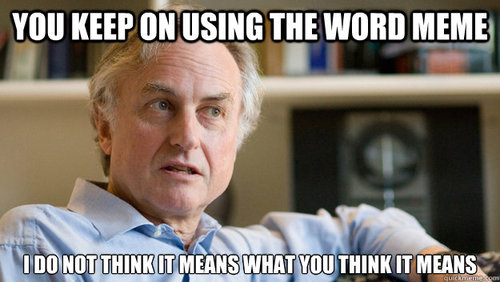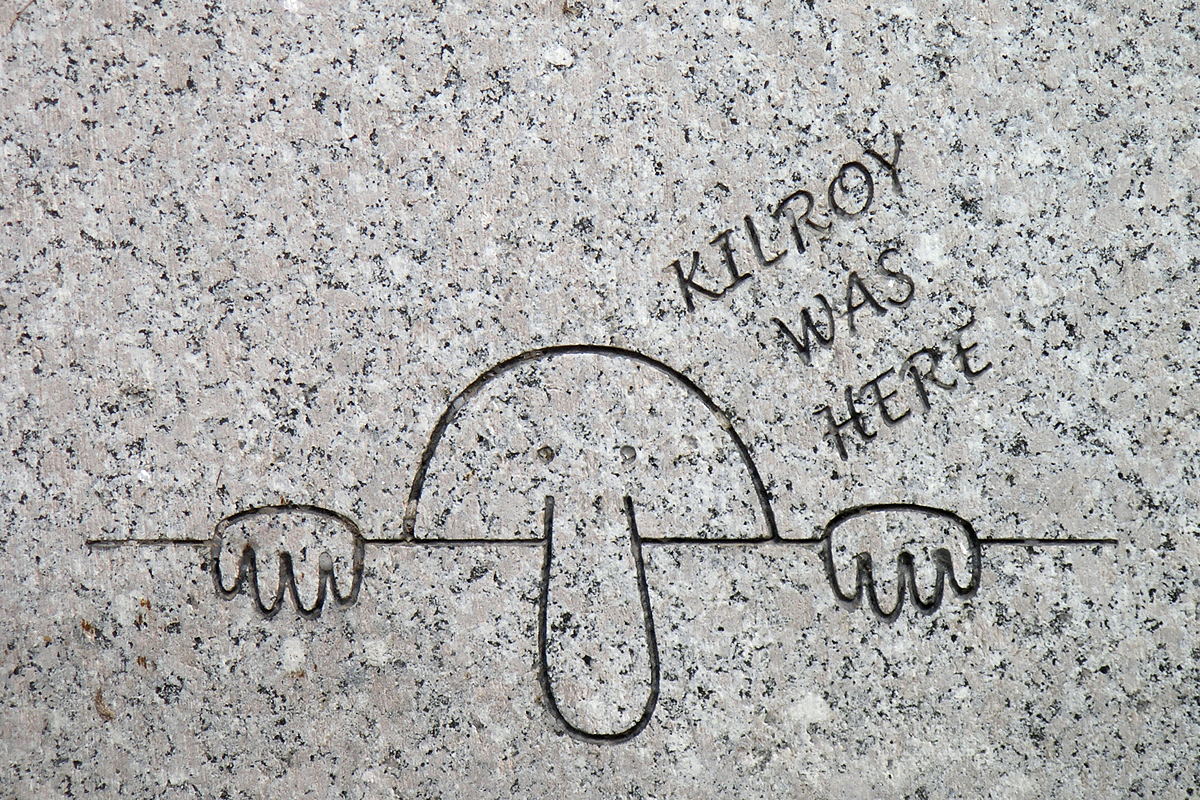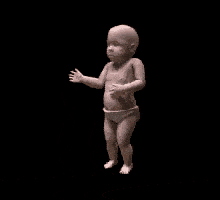From Kilroy to Pepe: The Evolution of Memes Through Time
What connects Pepe the Frog, the Spanish Inquisition, the blinking guy, the French Revolution, environmental awareness, and the Third Reich? Each represents a concept that proliferated until it saturated a culture or nation. As evolutionary biologistRichard Dawkinsthey are all equallydistinct elements of cultural knowledge, or as he referred to them,memes, a term originating from the Greek word “mimeme” and “gene.” Memes function as the equivalent of a “cultural gene.”
Dawkins argues that our beliefs, values, traditions, and practices propagate themselves. Similar to a virus, they spread among individuals via imitation, exchange, and reiteration. Although every meme originates as an idea, not every idea evolves into a meme, since some lack the appeal or relevance to be shared or duplicated.

Memes, as we recognize them today—visual expressions of emotions, concepts, humor, or simple jokes—have existed in some form since as early as 3 B.C. Excavations in the ancient city of Antioch revealed a three-panel mosaic portraying a bathing scenario. The initial panel shows a servant getting the bath ready; the next captures a youth fleeing from the bath, chased by an older servant who can’t quite reach him; the final image presents the young man’s “carefree” skeletal remains lounging casually with a wine jug.
The words beneath him state: “Stay joyful, embrace your existence.” The narrative here appears to convey, “No one should dictate your path! Follow your desires, for mortality awaits us all.”

Memes are not limited to humans; they play a role in the animal kingdom too. In 1965, researchers studying macaque monkeys on Koshima Islet in Japan noticed the monkeys meticulously cleaning sweet potatoes before eating them. They would remove sand and dirt until the potatoes were clean. One day, a female monkey carried her potato to the ocean and washed it. This behavior spread to other monkeys in the group and eventually to more monkeys on the island. A clear example of “mime me” at work.
Meme culture still features macaque monkeys, though the content has evolved significantly.

Our great-grandparents might not have understood how to use a computer or interact with Siri, but even they had their own version of a meme, one that remains recognizable worldwide. That meme was namedKilroyWith his elongated nose and hairless scalp, he was present for it, no matter what “it” might be. Though tales and folklore speculate about his beginnings, the reality is that Kilroy’s origins remain uncertain. One story suggests it began with ship inspector James Kilroy, while another attributes it to a soldier named Francis Kilroy. Yet, Kilroy’s roots matter less than what he represents.symbolized, somewhat similar to what we see nowadays with the”A Caucasian man blinking his eyes.” meme.

An etching of the “Kilroy Was Here” illustration is carved into the World War II Memorial in Washington, D.C.
Kilroy embodied the resilient spirit of American troops in World War II, and the widespread presence of the “Kilroy” symbol led to rumors among Germans that he could be an actual spy. He journeyed abroad and returned, lingering much like a lasting cultural meme. Transitioning from simple graffiti, Kilroy made his way into films and TV, including a notable appearance in the 1970 war film.Kelly’s Band of Warriorsand appeared in a 1975 episode ofM*A*S*H*Kilroy became the viral sensation that circled the globe.
Dawkins’s contributions undoubtedly brought widespread attention to the concept of memes as vehicles for cultural transmission, regardless of the medium. However, certain academics contend that a disconnect exists between Dawkins’s original theory and the evolution of memes in the digital age.
Professor Limor Shifman’s work explores the dynamics of internet culture, focusing on how memes and digital content spread and evolve. Her research highlights the intersection of humor, politics, and social behavior in online spaces. Shifman’s contributions provide valuable insights into the mechanisms behind viral phenomena and their impact on contemporary communication.The Hebrew University of Jerusalem’s researcher, specializing in internet memes, argues that digital memes stand apart as they are not isolated concepts but interconnected clusters of ideas deliberately shaped in relation to one another.
Pepe the frog, the so-called “star” of countless internet memes, has evolved from a simple cartoon character into a widely recognized symbol. Originally created by Matt Furie, Pepe gained popularity through online communities, where his image was adapted into various forms of humor and expression. Over time, certain groups appropriated his likeness, transforming him into a controversial figure. Despite this, Pepe remains a multifaceted icon, reflecting the unpredictable nature of digital culture.Feels Great, ManPepe, typically a laid-back frog, saw his image transformed into memes that were co-opted as emblems of white nationalism. According to Shifman, Internet memes are defined as “units of digital content sharing similar traits, produced with mutual recognition, and disseminated, replicated, or altered online by numerous users.” The audience ultimately determines what spreads and evolves, a process that can sometimes spiral beyond control.
Clip: Psychologist and Memetist Dr. Susan Blackmore discusses how the term “meme” came to be and its transformation in the digital age, resulting in the comic figure Pepe breaking free into the “memisphere.”
Tune in on Monday, October 19, via . pic.twitter.com/qVVI4FTXbP— Independent Lens (@IndependentLens)
Clip: Psychologist and Memetist Dr. Susan Blackmore discusses how the term “meme” originated and developed into an online phenomenon, resulting in the comic figure Pepe breaking free into the “memisphere.”
Tune in on Monday, October 19, via . pic.twitter.com/qVVI4FTXbP
— Independent Lens (@IndependentLens)
A prime illustration is the unfortunate experience of artist Matt Furie’s beloved character.Pepe, who users twisted from a cheerful frog character into an emblem of bigotry, to such an extent that his online misuse prompted the Anti-Defamation League to include Pepe in its catalog of hate symbols. Furie even attempted to “end” Pepe in a comic strip, hoping that would conclude the matter. However, internet memes are not easily managed or eliminated. (Though Pepe did experience a kind of revival, as the film will show.)
However, this represents only a single form of character abduction. ArtistKC Greencreated the now-iconic “This Is Fine” dog, first featured in Green’s comic series.Burning with intensity.Although the coffee-drinking dog is widely recognized, not many have encountered the initial comic. “This is fine” represents only the opening panels of the strip; the complete version appears as follows:

The situation is even worse than the understated single-panel comic suggests. In the 2016 election cycle, the Republican National Committee attempted to mock the Democratic National Convention by using the “This Is Fine” dog as a punchline, but Democrats, artist KC Green, and the original publisher quickly countered withthis:
We compensated the artist responsible for creating this. This is the result they delivered.
The Nib ✒️ (@thenib)
The artist who created this was properly compensated. This is the result of their work.
The internet remains, in many respects, an untamed frontier, and sharing your memes or artwork online demands a degree of trust in people, persistent effort, and possibly a skilled copyright lawyer kept on standby.
 Similar to Dawkins’ meme, not every digital meme deserves to be replicated or shared.
Similar to Dawkins’ meme, not every digital meme deserves to be replicated or shared.

Internet memes may not have a long history, yet their enduring popularity is remarkable. Thethe baby moving rhythmically to musicReleased in 1996, the dancing baby is widely regarded as the inaugural digital meme. Downloading it required hours, and its unsettling vibe left an impression. The iconic figure gained broader recognition after featuring prominently in a popular TV show, transitioning beyond its original digital format.Ally McBeal.
Shortly thereafter,The Dance of the Hamsteremerged into existence. Though much simpler than the infant preceding it, the creation was—and remains—an irresistibly contagious snippet of meme culture.
Then came the moment whenBadger, badger, badger, badgerinspired by a Flash animated meme created by British animator Jonti PickingCartoon badgers performing calisthenics to an upbeat bassline turned into an online sensation. Numerous other “early” memes originated in (a) Flash, yet as advancements in technology progressed, our fascination with these basic animations faded.
Today, the extravagant elements of Flash aren’t necessary for a meme to become popular.Grumpy Catis the visage that inspired a thousand memes. TheThe boyfriend who can’t seem to keep his focus in check.The image was initially a stock photograph taken by Antonio Guillem, marked as“An unfaithful man strolls with his partner, gazing in awe at an alluring woman nearby.” In both instances, the meme consists of the image alone, yet its ongoing virality stems from the worldwide ingenuity of countless individuals who persistently contribute fresh captions. This constant innovation ensures the visuals stay current and widely shared.
The “This is Fine” dog is far from the final meme to make waves in politics. In fact, numerous elected officials now manage meme-focused accounts. A few even leverage memes to boost their public visibility. For instance, Mike Bloomberg enlisted a firm to produce meme content.for his campaign, anticipating it would spread rapidly online. The contrived outcome fell short of his expectations. (Were ex-Fyre Festival organizers truly the ideal pick for the task, anyway?)

Certain advertising agencies now concentrate exclusively on crafting memes for products, candidates, and campaigns. Teams monitor every event, post, speech, and debate, searching for the perfect screenshot or phrase that can become the punchline of tomorrow’s viral share. Their aim is to propel their image from your social feeds to your texts, emails, and eventually to your friends—and their friends too.
Memes serve as a medium for sharing ideas, yet careful consideration is essential before passing them along. When humor is involved, ask whether it targets a specific individual or community. Does sharing this meme support a cause or organization? Is it truly valuable enough to circulate?
Dawkins describes a meme as a concept that spreads effortlessly, adopted by one individual and imitated by others. These ideas circulate through conversations, digital devices, and various media channels, with harmful ones often being reproduced repeatedly. Once more, Meme,Mimic my actions.A movement for peace can spread across the globe just as swiftly as a movement fueled by hatred.
Sharing an idea online is like tossing glitter into a fan—it spreads everywhere. What transforms that idea from mine to yours and eventually into a meme is our collective interaction.
Similar Movies
